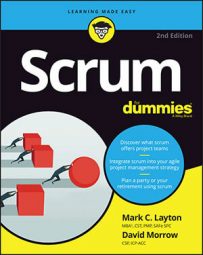- The vertical axis represents the work left to be done.
- The horizontal axis depicts the time still available in the sprint.
Some burndown charts also have a line showing the outstanding story points. This allows you to quickly and easily see the status of your sprint from both time and relative estimation perspectives.
You can create your own burndown chart with Microsoft Excel or download the one that’s included within the sprint backlog template, which you can download.
The burndown chart is generated from the sprint backlog. The sprint backlog should be updated every day, and only the development team can do this. At the end of each day, each developer updates their task (whether on a 3x5 card, on a spreadsheet, or in an electronic tool) by entering the number of remaining hours (not the number of completed hours) that are left to complete the task. That’s it. One number. It takes seconds and the results are invaluable.The sprint burndown chart is an information radiator that shows anyone who wants to know the status of the sprint. Burndown charts get generated automatically as development team members update the amount of time left on their one active task at the end of each day.
The burndown chart shows the amount of time remaining for the sum of all the requirements on the sprint backlog. Compared with the trend line, it provides a daily level of status detail for a Scrum team that you can’t get with traditional project management techniques.

